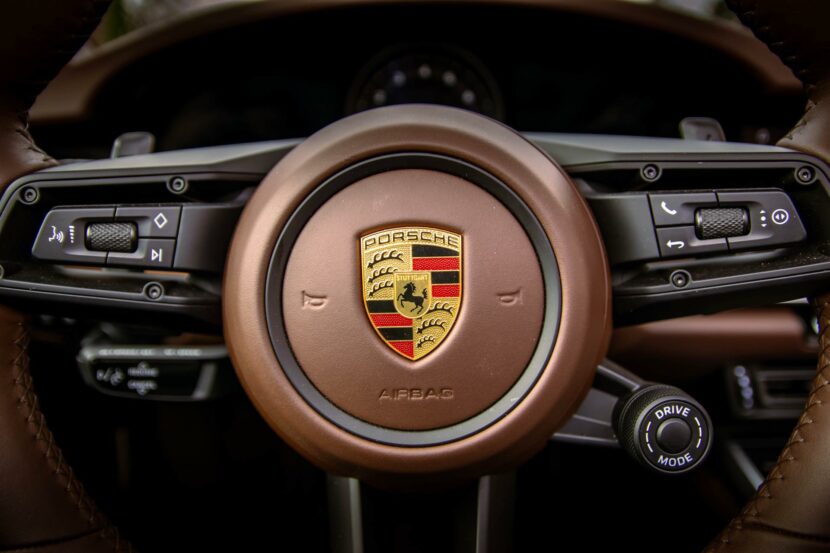Mood Rings
The Editor-In-Chief sent me a link with the following tag-line, ‘BMW develops health-check steering wheel to monitor physical and emotional duress’. Of course the first thing that ran through my mind is that they’ve attached a ‘mood ring’ sensor to the steering wheel. Mood rings were popular in the late ’70s and used a thermochromic substance that changed color based on the temperature of the fingers. It was supposed to be able to signal the emotional state of the wearer.
Then I thought that they’ll read stress off the steering wheel and it’ll pipe a little aroma therapy through the AC vents and probably select Kenny G on the audio system (what, no soothing M5 engine induction sounds?). Thanks, but no thanks.
Reading the press release itself shows that the tech in the steering wheel is much more advanced than the dubious quality of a mood ring, and it can intervene by slowing the car, reducing the volume of the radio, turning on the emergency flashers, and, if need be, stopping the car among other possible interventions. So here’s another case of, ‘We have all these wonderful inter-related systems, let’s see if we can’t make it do something novel with another batch of peripheral data input.’ I’m waiting for some schmuck to sue a car company for not preventing an accident when they get up from the driver’s seat, go to the back of the van, and fix themselves a drink.
Innovative Suppliers
BMW recognized a number of its suppliers for innovations they’ve enabled BMW to offer in their vehicles. It is not surprising that ZF is among them for the 8HP automatic transmission that is in an increasing number of BMWs. The 8HP is the first automatic to allow start/stop operation (thanks to a unique hydraulic fluid system) and now it is recognized for the 8HP ECO PRO mode. Thinking about ECO PRO leads to the question, is that the mode that BMW uses for fuel economy certification. It’s not that the enthusiast driver is going to spend a lot of time in ECO PRO mode. Yet here is a drivetrain mapping that returns significant fuel economy benefits over the other available mappings. Clever.
Another supplier that won the award for productivity was Schuler. Schuler is a manufacturer of metal forming technologies. BMW has to have agile metal stamping processes that can provide cost effective parts in limited quantities. BMW does not have the luxury of building a million of any particular vehicle in a year. The technology that won accolades for Schuler was its compact crossbar servo-press. Body panels often require multiple ‘strikes’ in different planes before they attain their finished shape. The Schuler compact crossbar servo-press does that with
minimum vibration and parts handling (especially in intermediate steps). It also allows for positioning of parts in seven axis within the press structure. Another requirement, not mentioned, is the need to quickly change dies to stamp parts for different models. Schuler is an enabler for BMW. And even more fun, for you production process geeks, Schuler has a tutorial on metal forming on their website: http://www.schulergroup.com/technologien/grundlagen_blechumformung/index.html
Final Thought For the Week
The V6 rumor for the next M3 is still rattling around the interwebs. What is interesting is that it would appear to be based on the existing 4.4L V8 (would you believe a 3.3L V6 just happens to be ¾ of the 4.4LV8). That would make it a 90 degree V6 necessitating offset crank journals and lots of massaging of the sound. So how do you go about shaving a set of cylinders off of a V8 to make a V6? Probably the way it would be done (on an engine with four valves per cylinder) is to loop off half of the middle two cylinders. The water and oil passages would need to be retained on each end of the block and of course the casting would be completely different, but the engineering wouldn’t need to be altered much. As to the number of turbos, a tri-turbo setup would work (especially with the width of the valley in the 90 degree V), but a twin scroll turbo with electric spool-up assist would be the way I’d approach it. The nice thing about locating the turbo in the V is that oil and water plumbing is really straightforward. Isolating the electric assist from the staggering heat generated by the turbo would be the big
engineering issue. Yet, with all that said, I hope BMW doesn’t go with a 90 degree V6 (or a V6 at all for that matter). I am a fan of inline 6s and RWD and at the moment only BMW can scratch that itch.




































































